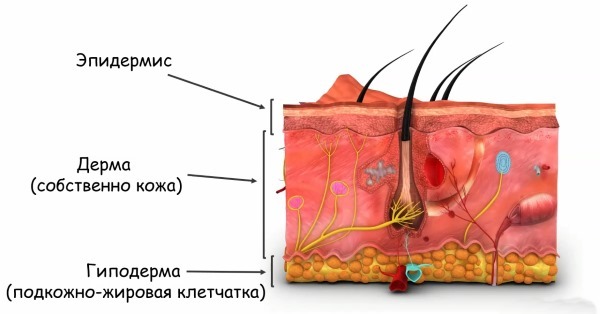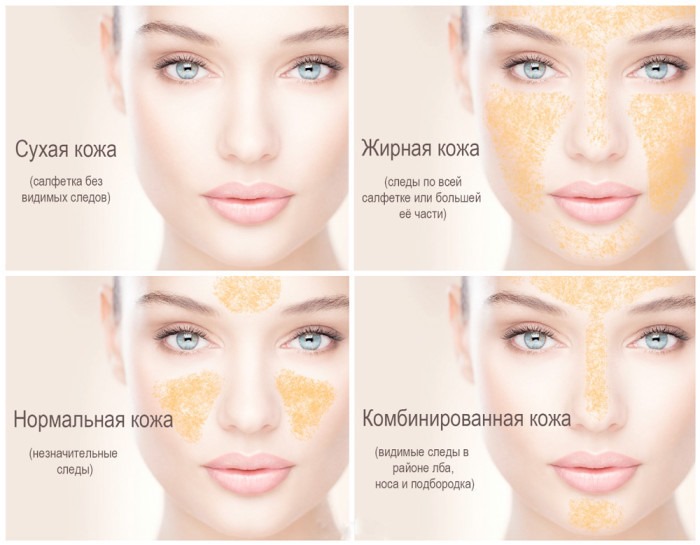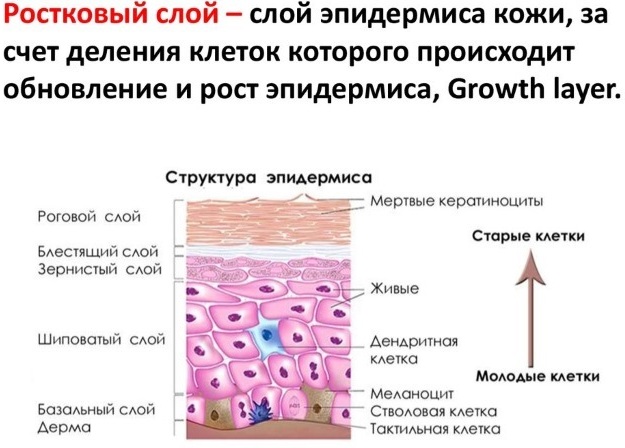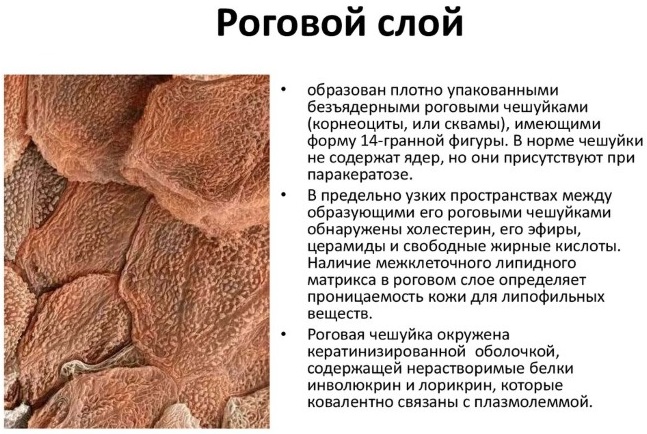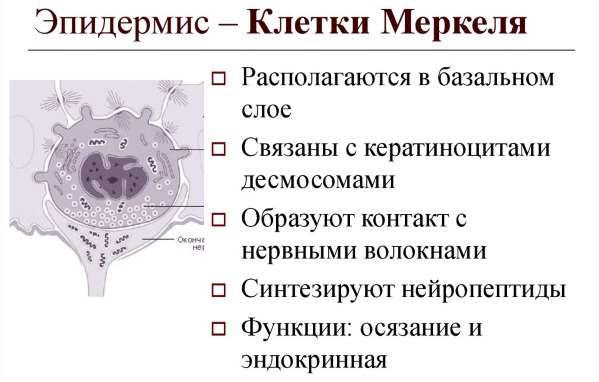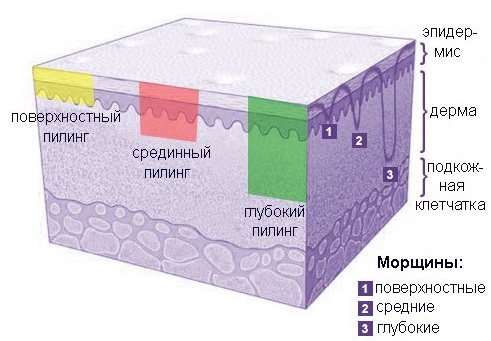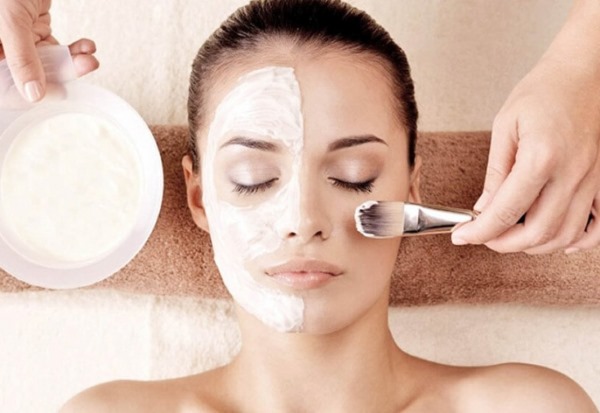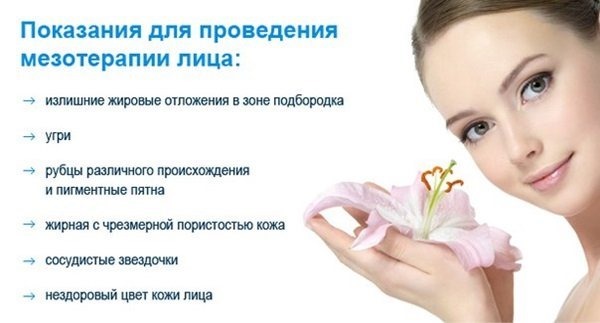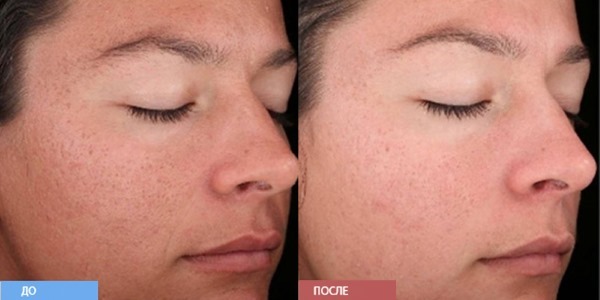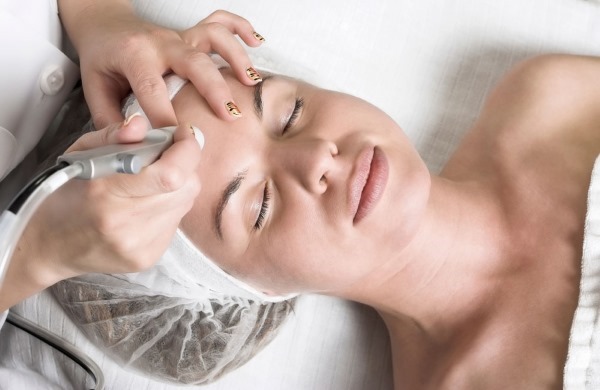Skin is a mirror of our body and requires careful care. Cosmetology cannot exist without knowledge of the epidermis, since they are extremely important for performing various procedures. Each layer performs certain functions, and in order to help a person solve a particular problem, you need to understand what you will have to work with.
What is the epidermis and what is it for?
The epidermis is the outer layer of the skin, made up of several layers and cells that perform specific functions. It includes the basal, prickly, granular, cycloidal and stratum corneum. They are located above the dermis.
The renewal of the epidermis is constantly observed. This process is associated with the transformation and migration of keratinocytes from the deeper layer of the skin to the upper one. All this happens in the course of differentiation. Elements of the immune system are present in the epidermis.
It performs certain functions, including:
- immune;
- protective;
- respiratory;
- receptor;
- resorption.
The most important function is considered to be protective, or barrier. The epidermis protects the body from the effects of negative environmental factors. It helps eliminate dehydration. The germ layer prevents toxins from entering the body, protects the body from dehydration. The cells in this layer are also capable of reflecting ultraviolet radiation.
It easily penetrates and damages living cells, but the stratum corneum effectively reflects it. Ultraviolet light is absorbed by other skin cells - melanosons. They concentrate over the nuclei of keratinocytes and look like umbrellas. Melanosons protect not only nuclear DNA, but also the skin layer as a whole.
Knowledge about the structure of the epidermis in cosmetology
To provide high-quality and proper skin care, it is necessary to know the structure of the epidermis, its functions and significance. Before the procedure, you need to determine the type of skin, which can be combination, dry, oily, normal.
Each of these types requires appropriate care.
If this is not done, then various complications and negative reactions may occur, which will lead to undesirable consequences.
The layers of the human skin epidermis have their own characteristics and structure, and this knowledge is necessary, since each cosmetic procedure requires intervention at a certain level. If mistakes are made during execution, then it is possible to disrupt the functioning of one or another layer, to worsen the condition of the skin.
The structure of the epidermis
The epidermis consists of 5 layers. They can be seen with the naked eye. Each person tries to take care of his skin - to use various moisturizers, to carry out wellness procedures. But, not everyone knows that the epidermis is a layer of dead keratinized cells.

 Don't miss the most popular column article: Face fitness for face contour lifting, rejuvenation, muscle tone. Master class from Elena Karkukli
Don't miss the most popular column article: Face fitness for face contour lifting, rejuvenation, muscle tone. Master class from Elena KarkukliBasal layer (germ)
The basal layer is the basis of the epidermis. The cells of this layer are densely located in relation to the dermis. The main function is protective. The germ layer protects the body from the effects of ultraviolet radiation. When cells multiply at this level, a complete change of skin layers occurs. The basal layer has a complete structure and is able to divide.
In young people, the process of exfoliation of old cells takes place in a month, with age this period increases to almost 3 months. If skin damage is observed, then the level of mitotic activity (death process) is reduced to several days. The epidermis is completely renewed, without any abnormalities at the genetic level.
The basal layer not only helps new cells to form, it also contains melanocytes. They produce melanin, which determines skin color. It is impossible to influence this process.
Spiny layer
The epidermis layer is considered the second. It is so named because of cells with processes that resemble thorns, tightly intertwined with each other. Spiny keratinocytes are arranged in 10 or more rows. This layer of the human skin epidermis performs mechanical protection of the cell nucleus from various influences and damage.
Granular layer
The granular layer is represented by 1 or 2 rows of cells located parallel to the skin. It does not allow liquid to penetrate into the distant layers. In this layer, the formation of filaggrin and keratolin is observed. After this, keratinization of the epithelium occurs. Promotes the formation of a plastic structure.
Shiny layer or cyclic layer
This layer exists, but it is impossible to examine it using light microscopy. It is characterized by shiny homogeneous stripes, which are distinguished by a pink color. The layer consists of 1 or 2 rows of flat-type cells that do not have clear boundaries, without nuclei and organelles. The cycliform layer is localized in the area of the palms and feet.
Stratum corneum
This layer of the epidermis consists of dead cells. It is characterized by a protective function.
The thickness will depend on the degree of stress received by this or that part of the body. Prevents the entry of pathogenic microflora into the body.
Epidermis cells
The layers of the human skin epidermis are diverse and consist of cells that differ in structure and functionality.
These include:
- Keratinocytes... They are considered the basis of the epidermis. They include keratin, which prevents the penetration of liquid. It also includes collagen and elastin, which make the skin supple and firm. Keratin in large quantities protects the epidermis, as a result, various formations of dead skin, for example, corn, can appear on the human body. Keratinocytes are constantly dying off and peeling off. In the process of epithelial differentiation, cells are capable of becoming larger, denser, keratinized over time.
- Melanocytes... Refers to pigment cells that contain dark pigment. They are localized in the first layer of the epidermis. They can also be found in the upper layer of the skin. They have long branching processes that run between the cells in the second layer, gradually moving towards the granular layer.
- Langerhans cells... Immune protection. Localized in the germ layer. They are distinguished by a tree-like shape. Their formation takes place in the bone marrow. These cells can move from the epidermis to the dermis, regional lymph nodes. In the process, an immune defense is created. They also perform an endocrine function, which consists in the synthesis of biologically active substances. The number of these cells decreases as a result of aging of the body, the influence of external factors, due to poisoning of the body with toxins and in chronic pathologies and deviations.
- Merkel cells. They are localized in the first layer. These cells are involved in the formation of the sensitivity of the skin.A significant number is contained in the epithelium at the tips of the fingers.
- Stem cells... They are localized in the first layer. They belong to the precursors of cells of all organs and tissues. They have the ability to be reborn in different tissue types.
Keratinization process
Keratinization is a process characterized by the death and keratinization of cells in the epidermis. It protects the internal environment from the negative effects of external factors. Cells are formed in the first epidermal layer. As they age, they move to the upper layers. After the first layer, they penetrate into the prickly one, where changes take place with them.
https://youtu.be/ND6Pl60ZA00
Then these cells enter the third layer, where their nucleus and organelles completely die, and the membrane becomes thicker. In the third layer, filaggrin takes part in the death, which contributes to the loss of water solubility in keratin, which leads to compaction. In the last layer, the epidermal cells become flatter and fit tightly to each other.
There filargin breaks down into amino acids. An important process that plays a special role in the protective function. Keratinization is a sequential process that affects each epidermal layer. As a result, substances are formed that protect the skin from the effects of negative factors of the surrounding world.
Skin rejuvenation by acting on different layers of the epidermis
The layers of the human skin epidermis perform various functions, but the main one is protective. When performing cosmetic procedures, this should be taken into account in order to achieve a positive result.
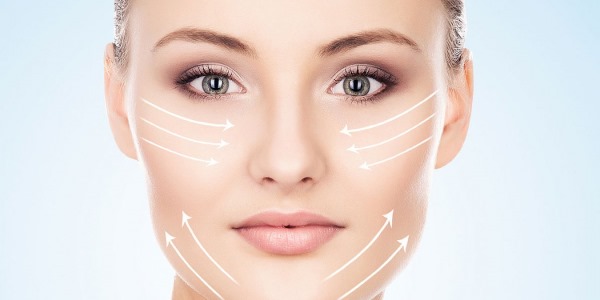
It must be understood that all creams and other products act precisely in the upper layer of the skin.
Deep penetration is possessed only by injections, which not everyone is capable of doing. Yes, they will help you achieve what you want faster, but it is not always safe, since there are contraindications.
It is important to know the structure of the epidermis in order to choose the right one or another anti-aging cream, mask or serum. The process of keritinization is the basis of cosmetic care. Procedures such as peeling, moisturizing, nourishment and rejuvenation are based on it.

 Don't miss the most popular column article: Facial massage according to the system of the Japanese doctor Asahi Zogan.
Don't miss the most popular column article: Facial massage according to the system of the Japanese doctor Asahi Zogan.The impact of chemical peels at the level of various layers of the epidermis
Chemical peeling - damage to the upper epidermal layers by various chemical agents that help in correcting imperfections in appearance.
During the procedure, preparations with alpha hydroxy acids (AHA) and beta hydroxy acids (BHA) can be used. AHAs include lactic, mandelic and glycolic acids. Salicylic acid belongs to BHA.
| Peeling procedure types | a brief description of |
| Surface | It is carried out using ANA. Recommended for patients with increased skin pigmentation. It does not have a strong effect, so after the procedure the defect does not go away, but becomes less pronounced. The main purpose of such peeling is to get rid of keratinized particles, to refresh skin color. The procedure is gentle. To achieve a noticeable result, a course is required. Superficial peels do not require anesthesia. The procedure is not traumatic. It is carried out at any age. Affects only the upper layers of the epidermis. |
| Middle | This peel is based on the use of stronger acids that reach the middle layers of the epidermis. The procedure significantly reduces the severity of pigmentation, helps smooth out scars, eliminates fine wrinkles. Preliminary preparation required. This type of peeling completely removes the stratum corneum, as a result, after the procedure, a crust forms, which disappears in 5-7 days. The recovery period can be more than 2-3 weeks. The procedure is recommended for patients aged 25 to 35 years. |
| Deep | Considered a dangerous procedure. Based on the use of highly concentrated acids or phenol. The recovery period can last more than six months. If the procedure is not performed correctly, scars or scars may form. Copes with medium to deep wrinkles. Damages all layers of the epidermis. This type of peeling is recommended for middle-aged patients. It is carried out in a hospital setting, anesthesia is required. Currently, it is used extremely rarely, as there are safer and more effective procedures. |
Preliminary preparation of the skin is required, the process of which is determined by the beautician. It starts 2 weeks before the peel. The preparation is based on the use of AHA 5% cleansing gel with glycolic acid. The use of the gel is carried out gradually. At first, it is used 1 time per day, gradually increasing to 2 times.
If you refuse preparation, you will not be able to achieve a positive result from the procedure.
Before peeling, you need to cleanse the skin from makeup. Carry out degreasing with special agents that normalize the acid balance. Then the active substance is distributed over the face, and then removed.
The procedure ends with the treatment of the skin with a post-peeling agent that neutralizes the acid. Burning sensation may be present. The layers of the human skin epidermis are necessarily damaged during peeling, and how much will depend on the type of procedure that is selected by the cosmetologist, and on the patient's age category, the condition of the skin, and the phototype.
Possibilities of mesotherapy in skin rejuvenation at the level of the epidermis layer
Mesotherapy is a cosmetic procedure that can solve many skin problems. It is based on the use of active substances that eliminate external imperfections from the inside. They are introduced into the area of the problem area. The composition of cocktails may include a variety of components, everything will depend on the lack.
Mesotherapy is used both in cosmetology and for the treatment of diseases of the back, joints, while eliminating pain in muscle tissue. To obtain the desired result, a course of procedures is required. The disadvantage is severe pain. In many cases, a local anesthetic is used in the form of a cream or gel. The effect of mesotherapy will be noticeable only six months later, not earlier.
The active ingredients affect all layers of the epidermis. It is strictly forbidden to carry out mesotherapy in the presence of an inflammatory process. To maintain the effect, the course is repeated after a year or earlier.
Microdermabrasion is an effective procedure for renewing the epidermis layer
Microdermabrasion is a mechanical type of peeling that is considered a safe and painless procedure. The use of anesthesia is not required, and the recovery period is minimal. This cosmetological method helps to get rid of dead skin and stimulates the formation of new cells.
Microdermabrasion is recommended for:
- Stimulates the production of elastin and collagen.
- Elimination of scars after previous skin diseases and postoperative scars.
- Elimination of age-related pigmentation and freckles.
- Removal of stretch marks.
- Elimination of small wrinkles in the eyes, lips.
- Removal of acne scars.
- With age-related skin changes.
- With uneven complexion and facial relief.
The procedure also has contraindications, which should be taken into account before starting:
- an allergic reaction to one of the constituent components;
- vascular inflammation, which is expressed in the formation of a capillary network;
- increased skin sensitivity;
- dermatosis of the active stage.
This method is distinguished by its effectiveness and the absence of damage. Microdermabrasion can be based on the use of a peeling cream or a special apparatus. In the first case, it is necessary to use Abradermol cream, which has a slight abrasive effect.This procedure can be monitored without any problem.
The hardware procedure is crystal and diamond. Microdermabrasion of the first type is based on the use of microcrystals of aluminum oxide, which are fed through the handpiece of the apparatus. As a result, there is exfoliation of dead skin, grinding, restoration of relief. This method is not as safe, but effective.
Diamond microdermabrasion is based on skin resurfacing using vacuum suction and diamond attachments.
This procedure has a milder effect. Before starting, you need to get rid of your makeup. After the procedure, a mask is made, which is selected depending on the type of skin, and a cream is applied.
After microdermabrasion, scars, scars, stretch marks are eliminated, the depth of wrinkles decreases, pigmentation becomes less pronounced, the pores are narrowed, and an unpleasant oily sheen disappears.
During the recovery period, special care is required, which consists in following the recommendations:
- regular use of a moisturizer with vitamins;
- using sunscreen or spray;
- refusal from the solarium.
The number of procedures will depend on the severity of the problem and the characteristics of the skin. On average, at least 4 sessions are recommended. The epidermis is the outer layer of the skin that protects against the harmful effects of external factors.
If you know its structure, then you can achieve a noticeable positive result from the cosmetic procedures. The skin is a mirror that shows what is happening with the human body, so you should not ignore any changes with it.
Article design: Anna Vinnitskaya
Video about the structure of the skin
Functions and layers of human skin:

